How To Set Up A Grandfather Clock
How to Prepare Your Antique Long Case Clock
In the data provided below yous can see how to setup your grandpa clock.
We at Green and Cockburn though cannot exist responsible if this work is not undertaken properly.
If you are to download this data please practice and then, merely also please feel free to telephone united states of america or contact us regarding any assistance that you might require, fifty-fifty though the information may be quite informative information technology is quite easy to damage the mechanism of a long case clock and this repair work might be quite expensive to undertake.
It is virtually ever desirable to set your Antique long case clock (or granddaddy clock) to the wall. If this is non done, apart from the risk of its being knocked over, when the weights are roughly one-half mode down (nearly level with the pendulum bob), they volition choice upwards its motion and rock from side to side and consequence in the pendulum stopping.
On a solid floor it is sometimes possible to avert fixing the clock to the wall by but chocking up the forepart anxiety approximately iii-eights of an inch off the floor. The weight of the clock will and so be thrown dorsum against the wall and get in relatively stable.
A longcase clock is usually best situated apartment confronting the wall as opposed to across a corner. It tin can be fixed there by screwing a piece of timber approximately 8-by-two-by-one inches horizontally to the wall and and so fixing the clock to this.
Should your skirting lath be thicker than one inch, the piece of timber will take to be increased in thickness correspondingly. The instance may be conveniently fixed to the piece of wood, either behind the hood, or more simply, backside the trunk door. Frequently there are holes already in the back of the example. In such instances the batten can be fixed at the same height.
When a clock has to be set up across a corner, a subclass such as that shown in Figure 2 should be used.
Prefer the following procedure afterwards getting the clock domicile1. Make up one's mind where yous want to place the clock and so fit a convenient batten. 2. Identify the instance in front of this, get it upright, and set information technology to the piece of wood. 3. Place the motility in the clock case, preferably with the lines which hold the weights fully extended. Get a 2d person to agree the clock motility while ane of the weights is put on to steady it. 4. Put the hood on. Then, past sliding your manus upward inside the clock case, position the motility so that the dial is correctly positioned within the hood with the latter fully seated. five. Remove the hood, taking care not to disturb the clock movement, and put on the 2nd weight (if applicable). The pendulum may at present be fitted by putting it inside the instance through the body door so feeding the strip of bound steel behind the movement through the steel loop or fork at the back of the move (known equally the crutch). And then hook information technology onto the brass subclass to a higher place by sliding the steel through the slot and letting it downwards until the pocket-size contumely block at the top of the spring rests on the bracket (Effigy 3). 6. Carefully wind upwardly the weights on your grandpa clock, making certain that the lines are not twisted and are winding evenly onto the barrels. | Figure 2. Effigy 3. |
| Figure 4. | 7. Do not air current the weights upwardly as far as possible. Always leave a gap of virtually two inches between the underneath of the clock and the pulleys. viii. Mark on the backboard of the clock the position where the tip of the pendulum hangs, and then move the pendulum kickoff to ane side and note or mark the position when the dock "ticks" or the second hand just goes on one 2d and then repeat the process on the other side. The "ticks" should occur evenly on either side of the original mark where the pendulum hangs. If information technology is too far to the left, then the whole clock must be tilted a piddling to the correct until the "trounce" is fifty-fifty on both sides. Notwithstanding, for obvious reasons such equally appearance and the pendulum hitting the side of the case when it swings, this can just be done to a very limited extent. The best method is to bend the crutch at the back of clock. This is the style in which a clockmaker would normally put a clock "in beat," just it does require care— otherwise the crutch or the escapement may be damaged. The crutch is aptitude in the contrary direction to the side on which the pendulum has to move farthest before the clock ticks. This is a frail performance and the crutch will usually require several adjustments before the vanquish is even. (Effigy 4). Unfortunately, the force of crutches varies greatly, some bending easily and others only with appreciable force. |
Regulation—If the Clock Loses:1. Stop the pendulum. two. Heighten the bob a little by turning the regulator nut below it (see Figure five). 3. Motility the easily forrard to the right time and start the clock by swinging the pendulum. 4. For precise regulation of the clock, let the pendulum swing until the seconds hand is at pinnacle expressionless center (on 60 or 12). Move the minute manus until it is exactly on a minute segmentation. Start the clock by holding the pendulum to one side and releasing it when the time bespeak is heard on the telephone, radio, or television set. | |
If the Clock Gains
one. Terminate the pendulum.
2. Lower the bob a petty by turning the regulation nut below it.
iii. Wait until the clock reads correct time and and so restart it. Alternatively it can exist left until it reads slow and then the minute and 60 minutes hands advanced to right time before restarting the clock.
NEVER Motility THE Easily BACKWARDS
NB: Regulators and all 30-hour clocks have a form of maintaining power which keeps them going whilst they are being wound, but the movement of nearly all others stops and loses this amount of time. Ideally, if it takes (for example) 20 seconds to wind the going side of a clock, then it should be adjusted to gain 20 seconds during the calendar week to allow for this.
Hit
1. When moving the hands always let the clock strike each hour. Similarly, if it chimes at the quarter-hour, let it chime each quarter in full. It is essential with all clocks fitted with a count wheel (sometimes chosen a locking plate) strike to let them sound out each hour in full. Otherwise, the strike volition go out of synchronization with the time and have to exist corrected.
It is extremely important in clocks fitted with rack striking to let them strike 12 in full as this allows the clock to reset itself for a further series of 1 2-hour strikes.
2. When turning the hands always motion them slowly for a few minutes before you come to the hour. When a "click" is heard pause for a few seconds to let the clock to fix itself to strike the hour and and so gradually move the mitt up to the hour. Allow the 60 minutes to be struck in total before moving the hands further.
Rack Strike
With eight-twenty-four hour period longcase clocks made in London after circa 1700 and in the country at a somewhat afterward date, a system of striking known every bit "Rack Strike" was employed in which the hitting side of the clock was permanently synchronized to the going (timekeeping) side. Thus, even if the hands are turned round inadvertently, without allowing the clock to strike certain hours, on the adjacent hour it will still strike correctly. Even so, it must not exist taken beyond 12 o'clock without letting information technology strike, otherwise permanent damage may ensue.
Considering it is essential that a clock with rack strike must always strike 12, both weights of the clock should be wound up together then that at that place is ever sufficient ability for it to strike.
Information technology is non possible to accept a clock with rack strike going with no strike considering of potential damage to the striking mechanism. The only exception to this is if there is strike/silent regulation on the clock or the movement is modified.
Count Wheel (or Locking Plate) Strike
"Count Wheel" is probably the more correct term for this form of strike. It is the earliest way of controlling the strike on longcase and indeed all clocks and was employed on most London clocks made before circa 1700, almost country clocks prior to 1720, and almost all 30-hour clocks.
| Effigy 6. | With eight-twenty-four hours clocks it gives the advantage that if y'all do not want it to strike all you lot accept to do is not wind the weight on the hit side (normally the one on the left as you lot look at the clock). No harm will come up to the striking machinery— equally would be the case with rack strike. However, the strike will take to exist resynchronized with the hands when the hit mechanism is put back into operation. Correction of the Count WheelTo adjust the strike, the hooked bar (detent) which engages the locking plate is lifted then released when the clock will strike the side by side hour (Figure 6). This process will have to be repeated until the strike is right (for instance, if the clock strikes ii when the clock reads 5:00, then the bar volition have to be lifted three times to set the strike correctly). |
Position of the Count WheelOn all xxx-hr clocks long instance clocks and almost eight-day clocks fabricated before 1690, the Count Wheel is mounted on the back of the movement. (Figure 7). With eight-24-hour interval clocks after 1690, it is usually mounted inside the movement either in front of or behind the corking bicycle on the hitting side of the clock (the left side equally you look at it). | Figure seven. |
| Effigy eight. | Winding: Thirty-60 minutes ClocksThe term "30-hr clock" does non necessarily mean that information technology will go for 30 hours, just merely more than 24. Some may become for 36 hours, whereas others will stop if you do non current of air them inside 26 hours. Occasionally, an early singlehanded longcase clock will be encountered which requires winding twice a twenty-four hour period, as did the first of the lantern clocks. The chain or rope which has to exist pulled down to raise the weight is normally that on the right of the clock. Notwithstanding, to ease the strain on the move, the left manus should be used to partially elevator the weight, either by holding the weight itself or by raising the left-hand rope (Figure 8). |
Eight-Twenty-four hour period Clocks
It is essential that the torso door is opened before winding so that one can run into that the gut lines are non twisted, that the lines are on the caster, and that the weight rises smoothly and is not wound upwardly also far. If it is and then the pulley will hit the seatboard on which the movement rests, resulting in either 1) the pulley tilting and the gut line coming off; 2) the line breaking and the weight crashing to the bottom of the case; or iii) teeth being aptitude or broken on the groovy cycle.
On all eight-twenty-four hours longcase clocks with rack strike, which probably comprises 95 percent of all those made, both the striking (left side) when looking at the clock and going weight (right side) must e'er be fully wound, otherwise the hit mechanism may exist damaged. Ideally, the striking weight should always exist wound a little higher than the going weight.
Calendar Work
If the clock has either a hand or an discontinuity with a revolving disc or ring behind it which indicates the day of the month, this will need to be set up correctly when the clock is installed. It will too require advancing by one day on the four months of the year when there are only thirty days in the month and by three days every February (except on spring years, when information technology will exist only two).
Some date indicators, usually the disc type, are driven from a part of the clock continued to the hr manus. These change every 12 hours, whereas others, usually the rings, are moved on by a pin on a separate wheel geared to turn information technology every 24 hours. The pin or lever which changes the appointment is usually merely engaged for 3-to-4 hours a day so that but one number stays in the centre of the aperture for practically the whole solar day. The engagement should be corrected when the mechanism is not engaged.
The clock should have been set up by the clockmaker and so that the appointment starts changing at or a little before midnight. By 4 o'clock the machinery is disengaged and from then until 8 or 9 o'clock information technology is safe to move it.
With a clock with a band which moves only in one case every 24 hours, it may be necessary to turn the hand circular 12 hours so as to get the date to change at 12 midnight instead of 12 noon. In one case this is fix correctly, the date can be altered at whatever time betwixt 5 A.M. and 8 P.Yard.
To actually correct the date, all that needs to be done (if it is indicated past the hand) is to open the hood door and movement the paw to the correct position. With a date aperture it is usually necessary to remove the hood to gain admission to the date ring or disc behind the dial before it tin can be rotated.
Unfortunately, although all date mechanisms should exist set upwards to commence irresolute at midnight and thus be free by iv or S A.M., this is by no means always the case. Thus, if more than than slight resistance is felt in moving the disc or ring it will hateful that the disc is engaged and you must and then delay changing the date until it is complimentary. By looking backside the dial, y'all can often meet whether or not the pin or lever driving the date machinery is actually engaged.
Moon Discs
When a clock has a moon disc (which is usually situated in the curvation of the dial), this also will need to be set correctly. This is merely washed past removing the hood and rotating the disc in a clockwise direction (never counterclockwise) until the correct age of the moon is shown. Equally with the appointment ring the moon is moved roughly once every 24 hours; (it goes round 29 ~ times a month) and is only engaged for a few hours of that period. It is important not to effort and motility the moon disc when resistance can be felt because the mechanism volition actually be turning the disc. On no account should you attempt to rotate the moon disc without removing the hood (for example, past pushing it from the front), every bit either the disc is probable to become distorted or the pin on which it rotates will exist bent and the mechanism volition then fail to piece of work.
Summary - Setting Up Your Antique Long Case Clock
- Make certain the clock is stable. Fix it to the wall if possible.
- Always wind up both weights of the clock and the chime side(the i on the left) a petty more and then the fourth dimension side
- Never turn the easily backwards.
- E'er allow information technology strike each 60 minutes.
- To dull it downwardly, lower the bob. To make it get faster, raise the bob.
- Only correct the engagement betwixt 4 and 8 o'clock.
- Ever open the trunk door earlier winding upward the weights to insure that the lines are non twisted.
- Stop winding weights well before the pulleys impact the underside of the clock.
Please contact us regarding any clock restoration project yous might accept. Nosotros would be quite pleased to receive photographs of your damaged clock.
Looking for an experienced antique clock restorer - contact Dark-green and Cockburn on …
Tel : 01462 790646 or E-mail :enquiries@greenrestoration.co.united kingdom
Horologists, Conservators and Restoration Specialists To The Art, Antiquarian And Museum Professions.
Conservation assist and advice
We at Greenish & Cockburn are willing to assist with whatever antique restoration project. Please contact us with your antique clocks and piece of furniture restoration problems. Perhaps we can offer help and advice.

We are Corporate members of the Historic Houses Association or HHA
Some of these fine antiques are looked after and housed in fine buildings supported by the Historic Houses Clan.
Source: https://www.greenrestoration.co.uk/setting-up-your-antique-clock.php

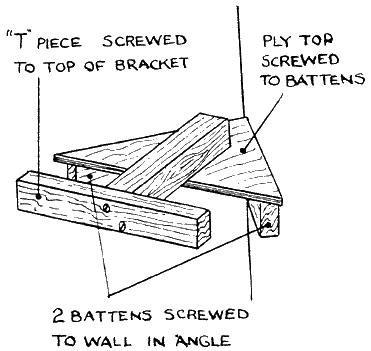
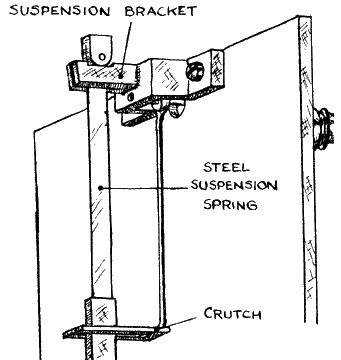
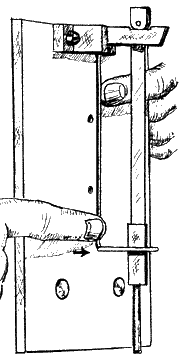
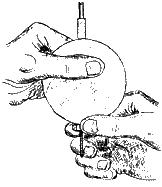
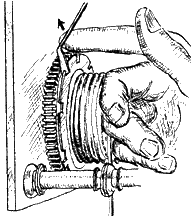
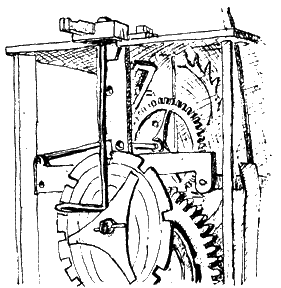
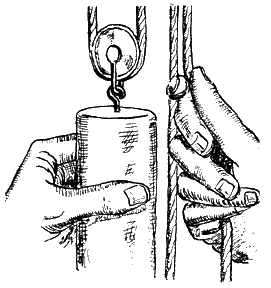
0 Response to "How To Set Up A Grandfather Clock"
Post a Comment